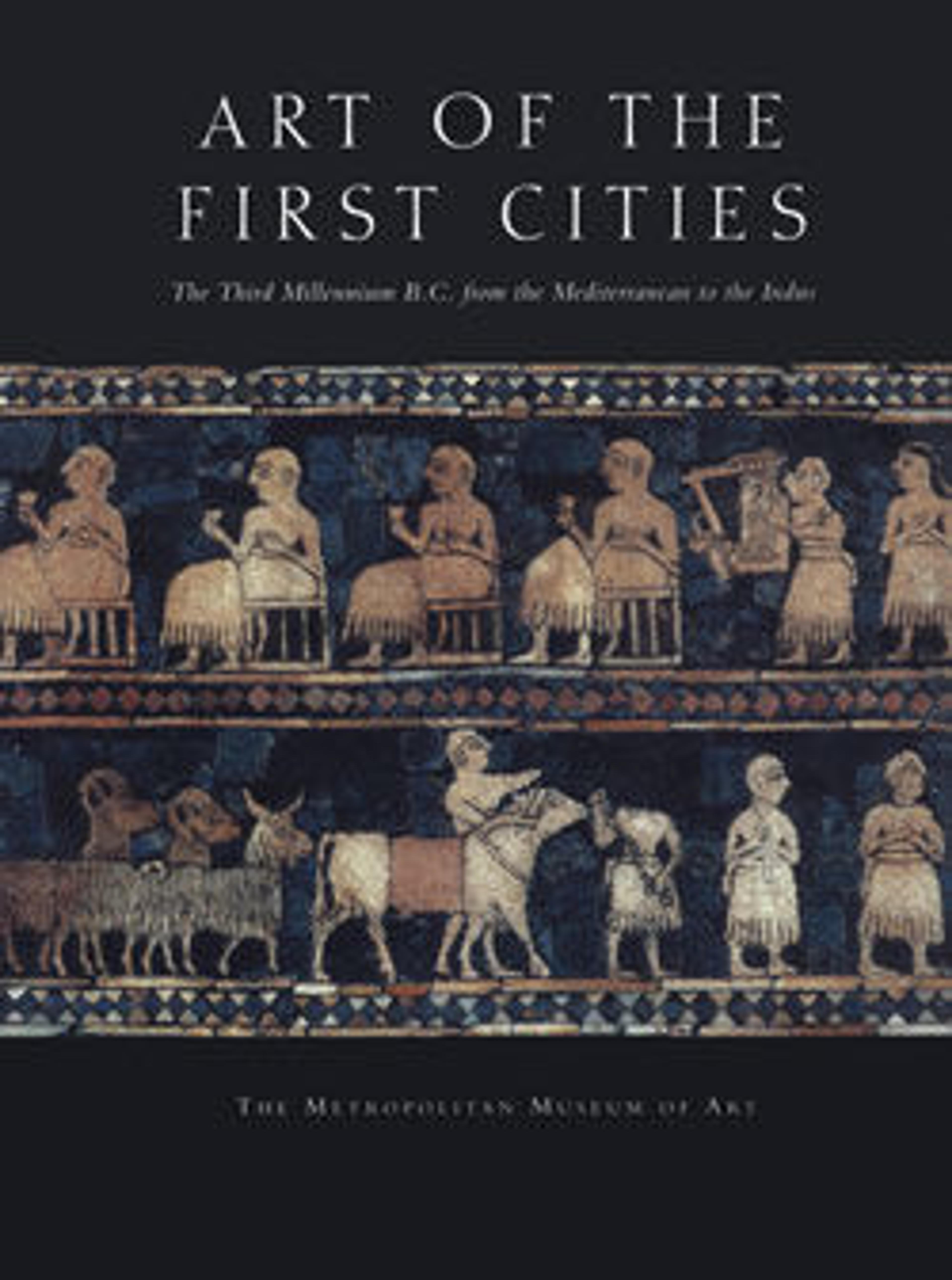Statue of Ur-Ningirsu, son of Gudea
The head of this sculpture is in the collection of the Metropolitan Museum while the body belongs to the Louvre Museum in Paris. The Louvre acquired its headless statue in 1925, the Metropolitan Museum acquired its head in 1947, and since 1974 the ensemble has been on exhibit alternately in New York City and Paris. It is not known when the head was broken from the statue. The fact that the Louvre's and Metropolitan Museum's two sections join is very rare. Equally rare is the stone, which is in the chlorite family.
This sculpture depicts a standing figure with clasped hands. An inscription written in cuneiform on its back names Ur-Ningirsu, ruler of the city of Lagash and the son and successor of Gudea. Beneath the feet is a high base with a scene depicting in relief eight kneeling men carrying objects, perhaps as tribute bearers. The head of this statue, as well as the pose of the body and the hand position, conform to the stylistic and formal representation of the many statues of Gudea.
The Sumerian inscription on his back reads as follows:
For Ninĝišzida, his personal god, Ur-Ninĝirsu, ruler of Lagaš, son of Gudea, ruler of Lagaš, the builder Ninĝirsu's E-ninnu, fashioned his own statue. He named this statue for his sake "As I am someone loved by his personal god, may my life be prolonged!", and brought it before him into his temple.
This sculpture depicts a standing figure with clasped hands. An inscription written in cuneiform on its back names Ur-Ningirsu, ruler of the city of Lagash and the son and successor of Gudea. Beneath the feet is a high base with a scene depicting in relief eight kneeling men carrying objects, perhaps as tribute bearers. The head of this statue, as well as the pose of the body and the hand position, conform to the stylistic and formal representation of the many statues of Gudea.
The Sumerian inscription on his back reads as follows:
For Ninĝišzida, his personal god, Ur-Ninĝirsu, ruler of Lagaš, son of Gudea, ruler of Lagaš, the builder Ninĝirsu's E-ninnu, fashioned his own statue. He named this statue for his sake "As I am someone loved by his personal god, may my life be prolonged!", and brought it before him into his temple.
Artwork Details
- Title:Statue of Ur-Ningirsu, son of Gudea
- Period:Neo-Sumerian
- Date:ca. 2080 BCE
- Geography:Mesopotamia, probably from Girsu (modern Tello)
- Culture:Neo-Sumerian
- Medium:Chlorite
- Dimensions:H. 55 cm (21 5/8 in.)
- Credit Line:Rogers Fund, 1947 and Lent by Musée du Louvre
- Object Number:47.100.86+L.2014.59
- Curatorial Department: Ancient West Asian Art
More Artwork
Research Resources
The Met provides unparalleled resources for research and welcomes an international community of students and scholars. The Met's Open Access API is where creators and researchers can connect to the The Met collection. Open Access data and public domain images are available for unrestricted commercial and noncommercial use without permission or fee.
To request images under copyright and other restrictions, please use this Image Request form.
Feedback
We continue to research and examine historical and cultural context for objects in The Met collection. If you have comments or questions about this object record, please contact us using the form below. The Museum looks forward to receiving your comments.
